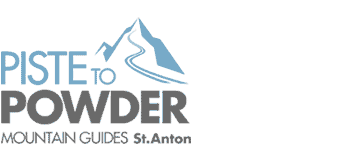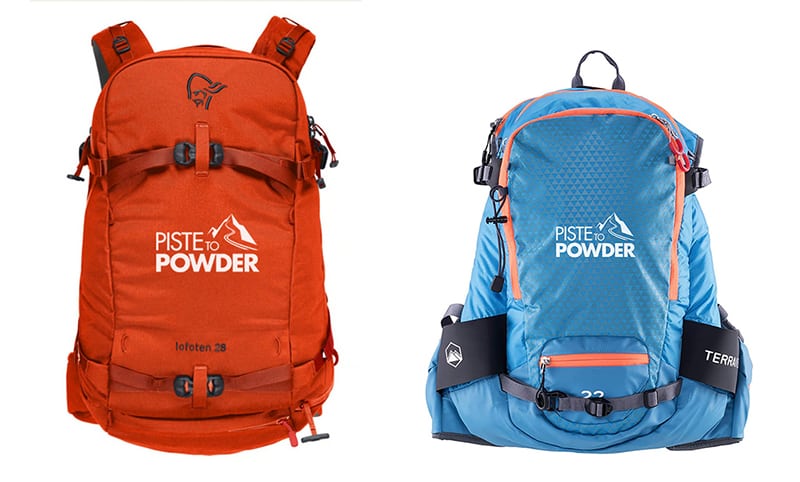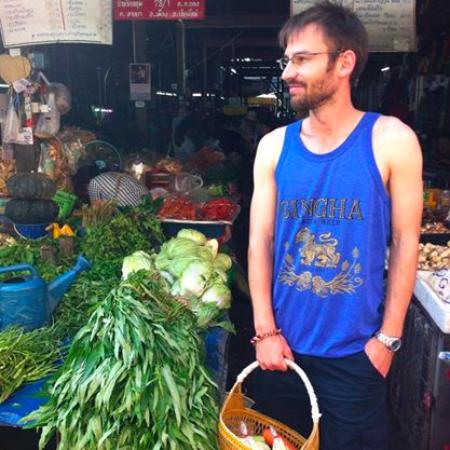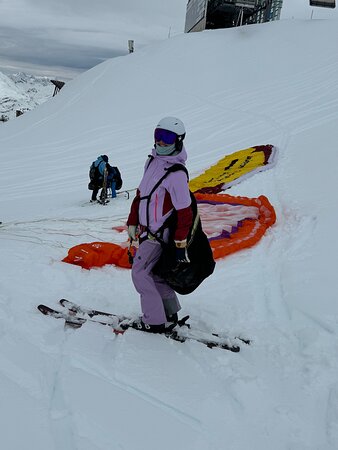OFF PISTE SKIING – What do I need for a day on the mountain? What should be in my rucksack?
Getting out quickly in the morning, it’s important to know what to pack so there’s no stress on the day when you want to be focussed on the fun and freeriding! So we’ve compiled this quick checklist of what always should be in your bag.
First you need a bag that is big enough to take the safety equipment 20-30 litres, with some space for the spare thermal items and snacks for the day. Your choice of bag is up to you, but some side pockets for easy access is great and ski carry straps are important for short hikes.
You’ll need a backpack (minimum 20 liters) with a SKI CARRY SYSTEM!
The ski carry system is essential when hiking and accessing the backcountry and untouched terrain via some of the short hikes. Those ski backpacks are also specially designed and developed for our purpose and have all all the features you need for entering backcountry terrain or also a day on the piste with friends and family.
If you like to rent a backpack please simply let us know when you book your off piste day!
If you’d like to buy one of our ski backpacks, we can offer one of the packs in the picture which you can collect at your first day of skiing with us, just let us know via our enquiry form.
KIT LIST:
Let’s start with the essentials that should always be in your off piste backpack:
Safety Equipment
- Modern digital 3 antenna transceiver
- Shovel
- Probe
You can rent your safety equipment in the morning for a small fee directly paid to our guide.
THE 10 ESSENTIALS
for your Off-Piste Day in the ARLBERG:
Sun screen
Extra handy sun cream stick and lip protection (50+) , you can buy the sticks at any of the ski shops.
Nourishment
Make your own high energy snack pack with a small pack of almonds, dates, raisins, cashews, and pieces of chorizo sausage and maybe a mini bounty/snickers bar! Have a muesli bar ready in your pockets to refill during small breaks.
Drinks
0,5-1 litre of water / juice is sufficient – any more gets heavy and bulky in your pack, aluminum water carrier or camelbak (on warm days), small thermos of tea for the British!
Warm Layer
Spare warm layer or lightweight down jacket. Your body temperature will fluctuate through the day depending on whether you are hiking or skiing or eating and also for emergency first aid use.
Beanie
Beanie for lunchtime or apres
Sunglasses
Spare pair of sunglasses in case your goggles get broken, for touring or for those lunchtime huts (to avoid the Goggle look!)
Spare gloves
Lightweight is fine and they will do the job if you lose one / On cold days bringt your mittens!
First Aid Kit
Small First Aid Kit – your guide will have a full first aid kit but always carry a few plasters, triangular bandage, chocolate or dextrose sugar tablets, and copy of insurance policy. Include a lightweight aluminum bivy bag for any emergency. Duck-tape or ski straps should be in there as well!
Paper money
Cash for the guide, lunch and any taxis & your credit cards.
Mobile charger
Mobile and quick charger (some phones goes down quickly in the cold) with emergency number 140 saved, use a plastic bag to protect your phone.
TOURING KIT for day tours
For day touring refer to list above but you also may need extra snacks and water plus sunprotection is vital here.
- Touring gloves – lightweight with grips
- Touring skis – 94mm minimum under foot, go lightweight for multiple day tours – look at range provided by Black Crows including Navis Freebird combined with a touring binding such as ATK (touring focus) or Atomic Shift (freeride focus).
- Ski crampons to fit your touring skis important for any ice, these really will make a difference and secure you in touring. We let you know in case those are needed.
- Touring or Hybrid Boots: Well fitting and comfortable is key here else you will have blisters. Like hiking boots Its a good idea to have worn these in. Hybrids are not as light as touring boots but an excellent option if you only want one pair!
- Skins!
- Lightweight Peaked Hat for the hot days – option with removable neck and face flap or wide brimmed floppy hat for greater 360 protection, strong sun protection 50+ – slather it on!
- Additional sandwich/snack for the summit
Freeride Ski Equipment
- Freeriding you need a wide powder ski something around 100mm underfoot for easier flotation in the powder, we recommend Black Crows which you can rent at Jennewein with 10% online discount. As a rule of thumb, headheight for length and more flex for easier turning. Jennewein will talk through what you need.
TOURING KIT for MULTIPLE day tours (SILVRETTA)
For multiple day touring refer to list above but you also need the following:
- Rucksack 35 litres or more. Pack light, aim for 10-12 kilos filled, including safety gear.
- Ski touring skis, minimum 84mm under the foot with skins, touring poles and ski crampons. Recommend Black Crow Navis or Orbs as excellent lightweight skis for touring. Also go for a lightweight touring binding – e.g.ATK.
- Ski touring boots with rubber soles – recommend that they are your own and you have already worn them in! Use Compeed preventively if you haven’t toured with them for first couple of days!Clothing
– Gore-tex shell type jacket and pants
– Light down jacket
– Windproof fleece top or windproof vest
– 2x wool thermal tops (merino recommended)
– 1x merino pants as under gore-tex layer
– Touring socks – 2 pairs, 1 short Light pair of socks for evening
– Lightweight (lighter the better) peaked hat or wide brimmed floppy hat
– Gloves 1x thick, 1x thin for walkingEssentials
– Glacier sun cream factor 50 minimum and lip salve SPF50+
– Goggles and sunglasses, peaked hat against sun – better still
– Buff (can also pull up around face to protect)Safety
– Helmet (recommended)
– First Aid Kit (Compeed Blister Cushions, personal medicines, hydration salts)
– Bivibag and Alu foil bagSnacking
– Energy Bars or home made snack pack – dates/apricots/nuts/chocolate
– Small Thermos and water drinking bottle minimum 1.5 litres size –
Hut Gear
– Very small toiletry bag (toothbrush, small shower gel, medicines…), lightweight travel towel
– Very lightweight hut slippers
– T- shirt (1 or 2 max)and light track pants or just wear merino pants/leggings in the hut
– light Silk inner sleeping liner/bag
– light bag to store clothes/items in hut for occasions when stay more than 1 nightLuxuries – but nice to have!
– After sun cream or small face Moisturiser
– Small pack of Face wipes – can also be used for feet, hands etc
– Small Battery pack – there are charging points in the huts but often not enough! – Gopro camera and stick mount
– lip salve for lipsSafety Equipment
Climbing Equipment, 40 euros/rental please ask if you require this
– Boot crampons (correctly fitting)
– Light Harness
– 1x Carabiner (Petzl Ball Lock)
– Reepschnur (short rope attached to Carabiner)Top tip – underlayers you use for the huts can be used for your final day touring! Take plenty of compeed, sense of adventure, and a big smile – Enjoy!
INSURANCE
Make sure you have an off piste insurance! Ideally you have an Austrian ALPINE CLUB INSURANCE!
















